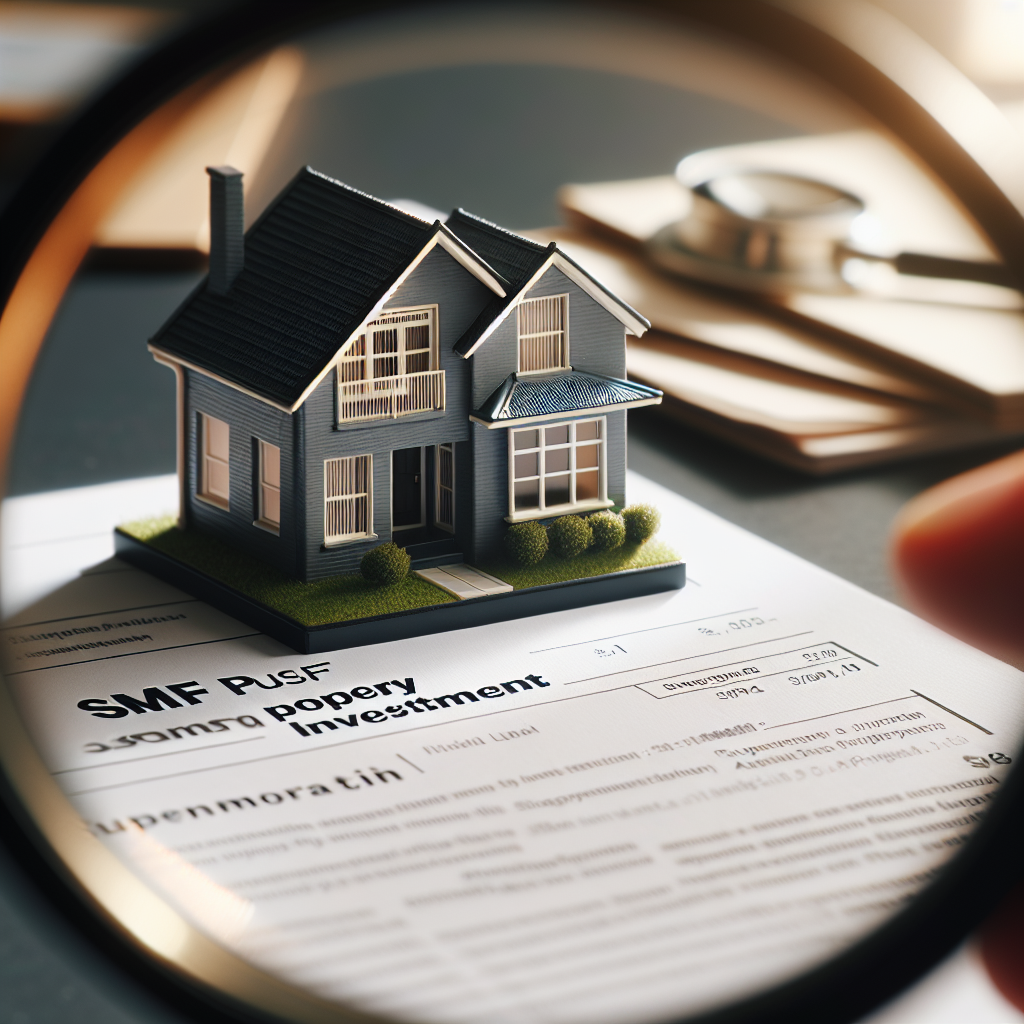In the quest for a financially secure retirement, many Australians are asking a compelling question: can you buy a property with your super? The short answer is yes—but it’s a pathway with specific requirements, regulations, and strategic considerations that need careful navigation.
Property has long been a cornerstone of wealth creation in Australia. When combined with the tax advantages of superannuation, it presents a potentially powerful strategy for building retirement wealth. This approach aligns perfectly with smart financial planning principles, allowing your retirement savings to work harder through tangible assets with growth potential.
Unlocking Your Super for Property Investment
The ability to buy property with superannuation isn’t a direct process. You can’t simply withdraw funds from your regular super account to purchase real estate. Instead, this investment strategy requires establishing a specific structure that gives you greater control over your retirement savings.
This is where a Self-Managed Super Fund (SMSF) becomes essential. An SMSF is the vehicle that opens the door to property investment with your superannuation. Unlike retail or industry super funds, SMSFs put you in the driver’s seat of your retirement planning, allowing you to make direct investment decisions, including purchasing property assets.
“The SMSF structure is the key that unlocks property investment within superannuation,” explain financial experts. “Without this structure, direct property investment using super is simply not possible under Australian regulations.”
When you establish an SMSF, you become both the trustee and the member of your fund. This dual role gives you the authority to determine where your retirement savings are invested, subject to compliance with superannuation laws and your fund’s trust deed.
Navigating the Regulatory Framework
Before rushing to buy property with your super, it’s crucial to understand the regulatory landscape. The Australian Taxation Office (ATO) strictly regulates SMSF property investments to ensure they genuinely contribute to retirement outcomes.
The cornerstone regulation is the ‘sole purpose test,’ which requires that every investment decision made within your SMSF must be for the sole purpose of providing retirement benefits to fund members. This fundamental principle has significant implications for property investment through super.
Most notably, you cannot:
- Live in the property purchased by your SMSF
- Rent the property to yourself, family members, or other related parties
- Use the property as a holiday home or for any personal benefit
- Purchase an existing property from yourself or related parties
As one SMSF trustee shared, “I have invested in property in my SMSF and in 4 years I’m doing a lot better than when I had a retail super fund. I guess it depends on the assets you pick, but understanding the compliance requirements was essential to my success.”
These restrictions highlight an important point: when you buy property with your super, the investment must be made at arm’s length and for purely investment purposes. The property must be managed like any other investment asset, with all decisions made to benefit the fund members’ retirement savings.
Failing to comply with these regulations can result in severe penalties, including the SMSF being deemed non-compliant, which could lead to a tax rate of 45% being applied to the fund’s assets.
Tax Advantages: A Compelling Benefit
One of the most attractive aspects of buying property with your super is the potential tax benefits. These advantages can significantly enhance your investment returns compared to purchasing property in your personal name.
Within an SMSF, rental income is taxed at the concessional superannuation rate of just 15%, compared to your marginal tax rate which could be as high as 45% plus Medicare levy. This tax efficiency means more of your rental returns are reinvested, potentially accelerating your wealth accumulation.
For example, consider an investment property generating $30,000 in annual rental income:
- In an individual’s name (45% tax bracket): $13,500 tax payable
- In an SMSF (15% tax rate): Only $4,500 tax payable
That’s an additional $9,000 per year working for your retirement rather than going to the tax office.
The capital gains tax (CGT) benefits are equally compelling. Properties held for over 12 months in an SMSF are eligible for a one-third discount on capital gains, effectively capping the maximum tax rate on the capital gain to just 10%.
Even more impressive, once your SMSF moves into pension phase, the tax rate on both rental income and capital gains can potentially drop to zero. This means you could sell a property that has substantially appreciated in value without paying any CGT, a benefit unavailable when investing outside superannuation.
As one financial advisor notes, “The tax structure within superannuation creates a powerful environment for property investment that can significantly outperform the same investment held in personal names, especially over the long term.”
Property as a Long-Term Growth Strategy
When considering whether you can buy a property with your super, it’s important to view this strategy through a long-term lens. Property investment within superannuation is particularly well-suited to a buy-and-hold approach, aligning perfectly with the long-term nature of retirement planning.
Real estate has historically delivered strong long-term capital growth in Australia, with property values in major cities showing impressive appreciation over decades despite periodic market fluctuations. This growth potential makes property an attractive asset class for building retirement wealth.
Additionally, property investment offers portfolio diversification benefits. By adding real estate to your super alongside traditional assets like shares and fixed income, you create a more balanced portfolio that may better withstand market volatility.
The rental income generated by investment properties also provides a reliable income stream, which becomes particularly valuable in retirement when your SMSF enters pension phase. This regular cash flow can supplement other retirement income sources, potentially providing greater financial security.
Property investment through your super also offers inflation protection. As living costs rise over time, both property values and rental returns tend to increase accordingly, helping preserve your purchasing power throughout retirement.
Understanding the Complexities and Suitability
While the ability to buy property with your super offers exciting wealth-building opportunities, it’s not a strategy suited to everyone. Before proceeding, you should carefully assess several key considerations.
First, establishing and maintaining an SMSF involves costs and administrative responsibilities. These include setup fees, annual audit requirements, ongoing accounting costs, and compliance obligations. For smaller super balances, these costs may outweigh the benefits.
Most financial experts recommend a minimum SMSF balance of $200,000-$300,000 before considering property investment, as noted in guides on using super for property investment. This threshold ensures the fund has sufficient assets to cover costs while maintaining appropriate diversification.
Financing arrangements for SMSF property purchases also add complexity. While SMSFs can borrow to purchase property through Limited Recourse Borrowing Arrangements (LRBAs), these structures involve additional costs and restrictions compared to traditional mortgages.
The property itself must also meet specific requirements. As mentioned earlier, it cannot provide current-day benefits to fund members or related parties. The investment decision must be documented in your fund’s investment strategy and must align with the best financial interests of fund members.
Liquidity is another important consideration. Property is an illiquid asset that can’t be quickly sold in portions to fund pension payments. Your SMSF needs sufficient liquid assets alongside the property to meet ongoing expenses and future pension obligations.
Making an Informed Decision
The pathway to property ownership through superannuation requires establishing an SMSF, ensuring regulatory compliance, and implementing a well-considered investment strategy. When executed correctly, this approach can leverage the tax advantages of superannuation while capturing the growth potential of property investment.
At Aries Financial, we believe in empowering investors through education and specialized expertise. As Australia’s Trusted SMSF Lending Specialist, we understand the complexities of SMSF property investment and are committed to helping trustees navigate this pathway with integrity and confidence.
The decision to buy property with your super should align with your broader retirement goals and financial circumstances. It requires a long-term perspective, meticulous attention to regulatory requirements, and an understanding of how property fits within your overall retirement strategy.
For those willing to embrace these responsibilities, property investment through superannuation can offer a powerful wealth-building opportunity. The combination of potential capital growth, rental income, tax efficiency, and portfolio diversification presents a compelling case for careful consideration.
As with any significant financial strategy, professional advice is essential. SMSF property investment involves financial, legal, and tax considerations that benefit from specialized expertise. Working with advisors experienced in SMSF lending and compliance can help ensure your property investment strategy contributes positively to your retirement outcomes.
Can you buy a property with your super? Absolutely—and with the right approach, it could be the strategic decision that transforms your retirement prospects, creating lasting financial security and wealth for your future.


